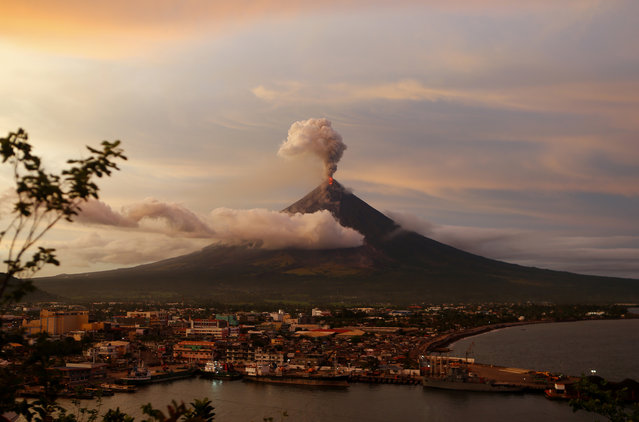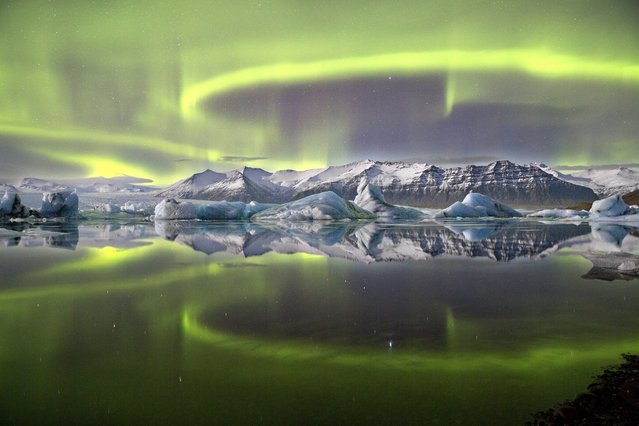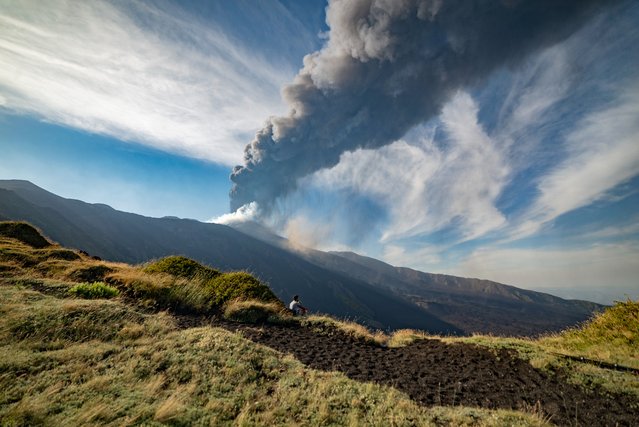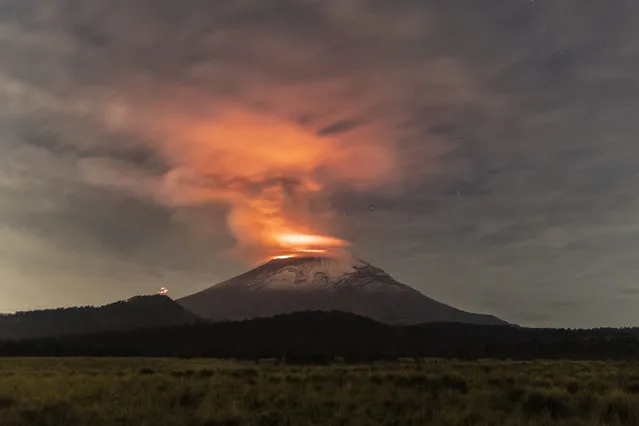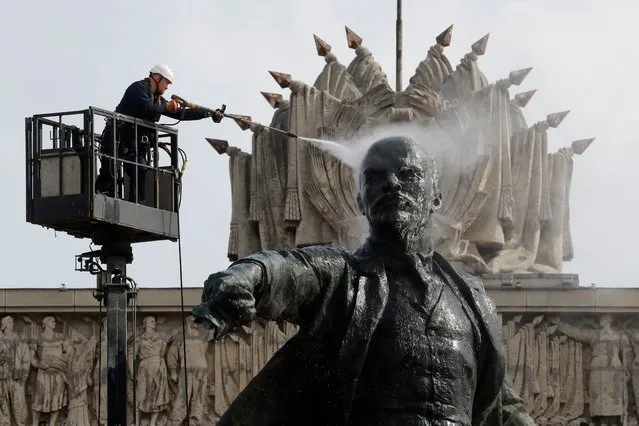
A municipal worker cleans the monument of Soviet state founder Vladimir Lenin from a crane during preparations for the 153th anniversary of Lenin's birthday in St. Petersburg, Russia, 18 April 2023. The monument to Vladimir Lenin at the Moscow Square was installed in 1970. It was made according to the project of the sculptor Mikhail Anikushin and is the tallest monument to Lenin in St. Petersburg. (Photo by Anatoly Maltsev/EPA/EFE/Rex Features/Shutterstock)
11 May 2023 03:52:00,post received
0 comments

